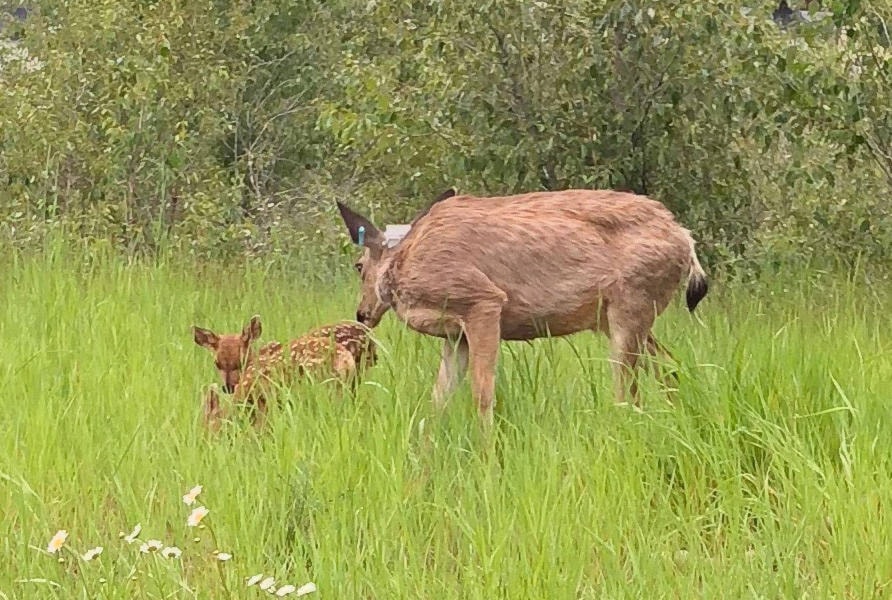Kimberley City Councillor Darryl Oakley has been the city representative on the Deer Advisory Committee for several years. The Bulletin spoke to him this week about the ongoing translocation of mule deer out of Kimberley, and what the plans may be for the coming year.
Fifty does and fawns were taken out of Kimberley in five days last March. Oakley says the operation goes quite smoothly and no deer have died from being moved.
However, there are always issues. One of those issues is the fact that the translocated (collared) deer show up in other communities. The City of Kimberley, under the terms of their translocation contract with the Ministry of Forests, Lands and Natural Resource Operations, has agreed to cover the costs of euthanizing these deer if they show up in neighbouring communities.
“We had a conference call last week with an Invermere Conservation Officer, the CAO of Canal Flats, the government biologist, Ian Adams (the biologist involved in monitoring the translocated deer) and myself,” Oakley said.
The issue was why the City of Kimberley had not dealt with translocated deer that showed up in Canal Flats.
“There has been some discussion that the City of Kimberley had walked away from dealing with these deer,” he said. “That’s not true. But under the terms of our contract with FLNRO, we cannot touch those deer during fawning season. We do plan to go back in October and if the animals are around, they will be removed.”
Oakley says that right now there appears to be one collared deer from the 2017 translocation, and two from the 2018, in Canal Flats.
“We went in before May 15 to remove the one from the year before but it had gone., so we’ll go back in October, once the permit allows.”
The Kimberley Urban Deer Committee has also discussed what the optimum population density of Kimberley’s deer should be.
“this year we had 147, and moved 50 out, so that’s 97. This is well below the threshold set out in our guiding document.”
However, Coun. Kent Goodwin suggested that Kimberley’s deer population should be around 30.
“Kimberley’s winter range is not great,” Oakley said. “Historically it would have supported about 30 deer.
“But how do you get to that?”
Council will have to decide whether to seek to continue the experimental translocation this coming winter, and FLNRO would have to decide if they want to continue, given that there are issues with deer coming back to communities.
“We don’t know why some animals come back to towns and some don’t,” Oakley said. “It’s a big question.”
Some of the things government biologists are looking at is are there are locations where geographic barriers — say a major river — could prevent deer from returning to populated areas.
“We don’t want deer we translocated going to other towns,” he said. “But it’s not a simple thing.”
Oakley says Adams can monitor the exact location of the translocated deer and sometimes their behaviour has no explanation.
“There was one doe that was moved to northeast of Canal Flats. It shows up by the Wasa bridge on a rural property. Right on their deck, acting agitated. What’s that about? A lot of behaviours are baffling in this process.”
Another deer, Oakley says, was taken from a yard in Townsite and returned, with its fawns, to that exact yard, even though it had been moved over 50 k away.
“We spent money to take her out and she’s back.
“But generally speaking, the majority of the animals are staying out of towns. Their predation is rate is slightly higher, but not as high as some expected. So some pieces of translocation are going well.”
The other issue that Oakley says may have to be addressed is the fact that bucks do not seem to be moving out of town after the rut any more.
“So far we’ve only translocated does and fawns, but we have to talk about how many bucks are in town too.”
